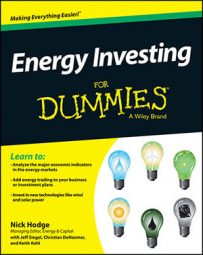If you are going to invest in oil, it helps to understand its history. In 1890, Standard Oil was producing 88 percent of the refined oil in the United States. It controlled 91 percent of the market in 1904 after turning from a trust into a holding company that held stock in 41 other companies. Standard Oil had a full-fledged monopoly on the oil business.
The U.S. Department of Justice sued Standard Oil in 1909 under the Sherman Antitrust Act, and in 1911 it was ordered to break up into separate companies, with autonomous boards of directors. In this table, you can see the major companies and what they’re called today, after more than a century of mergers and acquisitions.
| After Breakup | Bought by/Merged with | Then Became | Now Called |
|---|---|---|---|
| Standard Oil of New Jersey, or Esso (S.O.) | Humble Oil | Exxon | ExxonMobil |
| Standard Oil of New York | Vacuum Oil | Mobil | ExxonMobil |
| Standard Oil of California | Chevron | ||
| Standard Oil of Indiana | Amoco | BP | |
| Standard Atlantic | Richfield Oil | Atlantic Richfield (ARCO) | Sunoco |
| Standard Oil of Kentucky (Kyso) | Standard Oil of California | Chevron | |
| Continental Oil Company (Conoco) | Marland Oil Company | Part of DuPont | ConocoPhillips |
| Standard Oil of Ohio | BP | BP | |
| The Ohio Oil Company | United States Steel | Marathon Oil | Marathon Oil |
| Buckeye Pipe Line | Buckeye Partners | Buckeye Partners | |
| Chesebrough Manufacturing Company | Unilever | Unilever | |
| South Penn Oil | Pennzoil | Pennzoil-Quaker State | Royal Dutch Shell |
| Anglo-American | Standard Oil of New Jersey | Esso UK | ExxonMobil |
Many oil companies not owned by Standard Oil also began to thrive and compete internationally. They all still exist, though like the Standard Oil successor companies, many of the names have changed over time. This table identifies these companies and their path to modern day.
| Originally Called | What Happened? | Now Called |
|---|---|---|
| Union Oil Company (Unocal), founded 1890 | Merged with Chevron, 2005 | Chevron |
| Texaco, founded 1901 | Merged with Chevron, 2001 | Chevron |
| Gulf Oil, founded 1901 | Merged with Chevron, 1985 | Split among Chevron, BP, Cumberland Farms |
| Sun Company, incorporated 1901 | Changed name to Sunoco in 2011 | Merged with Energy Transfer Partners |
| Cities Services Company, founded 1910 | Acquired by Occidental Petroleum | Drilling and exploration owned by Occidental; refining and retail became Citgo |
| Pure Oil, founded 1914 | Merged with Union Oil Company of California (Unocal), 1965 | Chevron |
It’s not a coincidence that a few of these companies were founded in 1901. Oil was struck in the legendary Spindletop oil field that year. It produced more than 100,000 barrels per day within a year, more than any field in the world to that point. It kicked off the Texas oil boom and soon made the United States the world’s largest oil producer.
The global oil industry, from North America to the Middle East, has been continually looking for the next gusher ever since.

